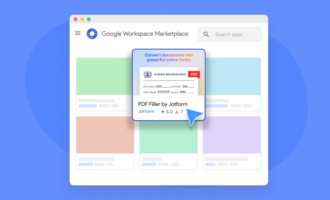Anyone who’s ever embarked on the massive undertaking that is writing a book will tell you this: it’s not for the weak of heart.
Your journey will involve copious amounts of coffee, endless nights of doubt, multiple drafts, tears, sweat, and blood. (Ok, this last one’s an exaggeration. But it certainly feels that way.)
In writing my newly-released book Automate Your Busywork, I spent months agonizing over how to best express the concepts I’ve professed over the past 17 years as the CEO of my company. Even before the writing began, my mind was quick to consider all the variables. It would be one of the most creative and fulfilling endeavors I’ve ever taken on. And I knew that I’d have to rely on more than mere inspiration to get it done — I had to be disciplined in my approach.
Every successful author will say the same: work ethic trumps motivation. Showing up to the page day after day is what ultimately makes you successful. One of the questions I get asked a lot lately is how to keep up the momentum of writing a book over a long period of time.
It’s as simple as this: by mastering your constraints. Contrary to popular belief, rules and boundaries actually help spark our creativity.
Limitations can foster innovation and productivity
A book project is a perfect example of what a constraint looks like. For instance, I knew I needed to set specific guidelines for myself to know when I was “done” — when I’d reached the finish line. I knew there were a certain amount of chapters I wanted to cover and that I’d keep the final word count within a reasonable frame.
The above constraints allowed for deeper focus without the distraction of endless possibilities. If I’d simply decided to go with the flow and let my instincts guide me, I never would have reached an endpoint.
In their fascinating story for Harvard Business Review, co-authors Ogaz A. Acar, Murat Tarakci, and Daan van Knippenberg point out:
When there are no constraints on the creative process, complacency sets in, and people follow what psychologists call the path-of-least-resistance — they go for the most intuitive idea that comes to mind rather than investing in the development of better ideas.
They add: “Constraints, in contrast, provide focus and a creative challenge that motivates people to search for and connect information from different sources to generate novel ideas.”
Don’t get me wrong, I believe there’s a time and place for allowing our minds to roam free and unhindered. Making time to do nothing is something I write about extensively. But it’s only one side of the coin when it comes to being productive.
“Constraints have a Goldilocks quality,” writes the author of Innovation X: Why a Company’s Toughest Problems are its Greatest Advantage, Adam Richardson.
“Too many and you will indeed suffocate in stale thinking, too few and you risk a rambling vision quest.”
How awareness helps decision-making
We often convince ourselves that we don’t need to set limits when it comes to our creative process. It’s easier to try and summon inspiration from thin air rather than to sit at a desk with a 250-word goal for the day.
Constraints involve discomfort, period. Just as any meaningful discipline does. And as Richardson highlights:
Creativity needs some grit, in both senses of the word: an irritant to get the ball rolling (like a grain of sand births an oyster pearl), and persistence to push through to completion.
“Beautiful, brutal clarity is your goal,” he adds.
I’ve had many such moments over the course of growing my startup to a successful company with millions of users worldwide. And they’ve all been a result of putting such constraints into practice. I’ve long believed that paring down to just the essentials transforms the way we do business and the way we live our lives.
Deliberate elimination fosters creativity
Having a writing routine — one where I knew I had set parameters — gave me the structure needed to finish my book project. Had I relied on motivation alone to guide me, I wouldn’t have shown up to the page on days when I felt blocked.
Limits keep us attuned to our big-picture goals. They also facilitate greater focus and simplicity. I knew that as long as I showed up and wrote my daily word count — creativity would find me. The way a regular dose of exercise can help our mental health after a bad day, or drinking a set amount of water each day gives us greater clarity.
In the same vein, reducing our choices to what we know we must do is often the catalyst to change.
Automate Your Busywork is a product of this kind of deliberate elimination. It’s been carefully sculpted and honed around the idea that we can and should save our brains for the big stuff. The project has distilled nearly two decades worth of personal and professional experience — and I owe all of this to having given myself limits from the get-go.
Embracing limits is the key to unlocking your creativity. Whether you’re brainstorming new projects at work or developing your own book, according to Richardson, you shouldn’t be afraid of constraints. “They can be your friend, your muse even,” he explains.
Thinking outside the box is all well and good, but if the box is the right size and shape it might help, not hinder, your creativity.







































































Send Comment: